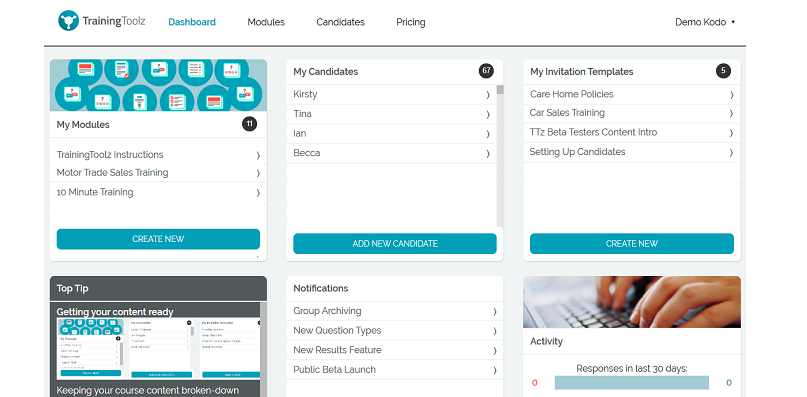Whilst it feels as if we’ve come a long way when it comes to tackling cyber bullying, events of previous weeks show there is still much to be done.

Only days ago, another victim took their own life as a result of being persecuted on the Internet. Yorkshire teenager, George Hessay had just turned 15 on May 10th when he was found to have hung himself after receiving insulting comments online. Surprisingly, the comments were not posted on one of the mainstream social media sites but on Sayat.me, an Estonian site created as an anonymous feedback tool for business users seeking “constructive, honest feedback” from colleagues and clients. The site clearly states that it is for use by people over 18, yet amongst its 30 million users, many are believed to be teenagers.
The Sayat.me site apologised with a statement that it deplores bullying of any kind and was taken offline by its administrators, however removing the site fails to address the crux of the problem. For every site that is removed, there are always hundreds of other ‘anonymous’ sites that can be willingly accessed by teenagers. These are often unmoderated and lack the adequate tools to report and block offensive comments.
The problem of anonymity
Anonymous sites pose particular dangers for young people. Whilst they state their purpose is to give people the freedom to express themselves without fear or prejudice, giving irresponsible people a virtual curtain to hide behind often means giving them the means to torment others without the fear of reproach. Strong opinions that wouldn’t normally be vented in the real world can easily be typed in just a few seconds, online arguments can escalate and people quickly become victims of insult or abuse. For younger people, their bullies are often people they know in the real world; frustrated or jealous school mates who reveal a nastier side when they have the opportunity to conceal their identities. Bullied adolescents and teenagers are left hurt and agonised, not knowing which of their ‘friends’ has turned against them.
One of the ways online bullying differs so much from personal bullying is that the perpetrator is able to psychologically disconnect themselves from the damage they are causing. Whilst bullying once took place in the playground, the ownership of digital devices by young people means that bullying can take place on a 24 hour basis. For the victim there is no escape, even when they’re at home. Younger people who have experienced online bullying suffer from lower self-esteem, fear, frustration, anger and depression and increased suicidal ideation, with the psychological damage of online bullying often taking years to heal. The impact is long lasting.
Let’s start talking
With no real way to enforce an over 18s restriction on anonymous websites (most young people will falsify information to sign up anyway) the only way to prevent online bullying is to encourage victims to speak out and raise awareness of the damage they’ve suffered at the hands of other young people. Whilst technology has evolved at a tremendous pace, some of the social aspects of bullying remain the same. Young people still experience tremendous pressure to be accepted. Action for Children reported that one in seven (15%) children has bullied others online, with nearly 60% of children responding that they bullied to fit in with a certain social group.
The need for proper education, openness and discussion of the matter has been supported by the NSPCC who, in the wake of George Hessay’s death stated that “Children and teenagers must be reassured that it’s perfectly okay to refuse to take part in crazes that either make themselves or other people upset, hurt and scared and that parents should talk with their children and emphasise that they can still be accepted even if they don’t go along with the crowd.”
Having these types of conversations can be difficult, but opening up the subject carries huge benefits. Those who are being bullied find it incredibly isolating and fear discussing the types of comments they’ve been receiving, particularly with their parents. Making it clear to them that it’s ok to bring things into the open without creating anger, criticism or upset means that the problem can explored, options discussed and any further bullying eliminated, giving the child a much happier outcome.
How parents can get involved
With half term almost upon us, Internet Matters has taken the perfect opportunity to drive these conversations through its #Pledge2Talk campaign. Working alongside the Anti-Bullying Alliance, they have created guides for parents, providing advice on how to discuss the subject of cyber bullying with their children and the steps they can take if they feel they are being threatened online. The week-long holiday means that parents are more likely to be with their children at home, with many children using their mobile devices and social media, giving a natural situation in which the topic can be raised and discussed.
Talking about cyber bullying in the school environment
Education about the cyber bullying shouldn’t just stop at home, and 'Stop Cyberbullying Day' on 16th June gives schools a chance to create a themed day around the topic. This could include assemblies, lessons and workshops about why young people are drawn into online bullying, how to say ‘no’ when encouraged by peers to bully others and how young people can reduce the risk of attracting online bullies, such as not using anonymous forums and websites. Most importantly, it’s a perfect time to discuss the responsible use of the Internet, meaning adolescents understand how their online behaviour impacts others and how it can leave behind lasting and harmful consequences.
Free cyber bullying webinar
To learn more about teaching children about cyber bullying, why not join us for one of our three seminars taking place throughout Thursday 8th June?
Presented by Tim Pinto, e-safety consultant and member of the Educational Advisory Board for CEOP, each webinar will give you a 20 minute refresher on the topic, quickly updating you on all you need to know about this increasingly worrying trend of behaviour amongst young people.
The webinars will address the following:
Definitions of cyber bullying - different names e.g. trash talk
Research - how many young people are being affected?
The signs to look out for and the consequences of cyber bullying
Ways to counter cyber bullying
There will also be a section on tips for teaching cyber bullying awareness and prevention.
To register for the 10am cyber bullying webinar, click here
To register for the 2pm cyber bullying webinar, click here
To register for the 4pm cyber bullying webinar, click here
All E-safety Support members can also download a cyber bullying assembly plan to use on 'Stop Cyberbullying Day'. To download the assembly, log into your E-safety Support dashboard or register for free membership
Further webinars taking place include 'Digital Reputation' and 'Public WiFi' - find out more
 According to recent figures released by the DfE, teacher training is shifting further away from universities, with school-based teacher training places rising from 58% in 2015 to 64% in 2017
According to recent figures released by the DfE, teacher training is shifting further away from universities, with school-based teacher training places rising from 58% in 2015 to 64% in 2017



 Only days ago, another victim took their own life as a result of being persecuted on the Internet. Yorkshire teenager, George Hessay had just turned 15 on May 10th when he was found to have hung himself after receiving insulting comments online. Surprisingly, the comments were not posted on one of the mainstream social media sites but on Sayat.me, an Estonian site created as an anonymous feedback tool for business users seeking “constructive, honest feedback” from colleagues and clients. The site clearly states that it is for use by people over 18, yet amongst its 30 million users, many are believed to be teenagers.
Only days ago, another victim took their own life as a result of being persecuted on the Internet. Yorkshire teenager, George Hessay had just turned 15 on May 10th when he was found to have hung himself after receiving insulting comments online. Surprisingly, the comments were not posted on one of the mainstream social media sites but on Sayat.me, an Estonian site created as an anonymous feedback tool for business users seeking “constructive, honest feedback” from colleagues and clients. The site clearly states that it is for use by people over 18, yet amongst its 30 million users, many are believed to be teenagers.


